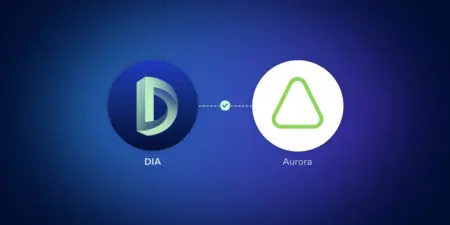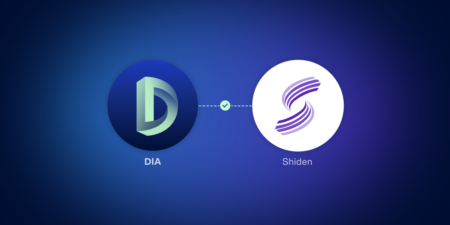Introducing DIA Lumina: The Rollup-Enabled Oracle
DIA introduces its vision for a fully decentralized, open oracle network with ‘Lasernet’, a layer-2 rollup, at the core of the new stack.
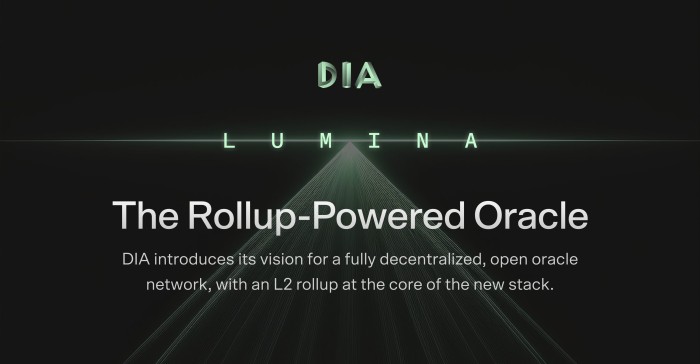
TL;DR
- DIA introduces its vision for a fully decentralized, open oracle network with ‘Lasernet’, a layer-2 rollup, at the core of the new stack.
- All critical oracle operations will be executed on the L2, ensuring an unmatched level of transparency and scalability.
- Sourcing and aggregating first-party trade data by independent nodes directly from any data source enables DIA to offer price feeds for any asset on any destination chain.
- The new product stack lays the foundation for using the DIA utility token to enable access to services and functionalities within the platform, and to reward node operators and delegators.
DIA Lumina: A New Oracle Primitive
Today, we are thrilled to introduce DIA Lumina, a completely redesigned oracle stack built from the ground up. This new architecture focuses on maximizing decentralization and trustless execution while enhancing the utility of the native DIA token.
DIA Lumina is composed of state-of-the-art modular components that use Lasernet, an Ethereum layer-2 rollup, at its core to settle critical data operations such as storage, computation, and verification. Simultaneously, Lumina employs staking incentives to drive decentralized data sourcing, utilize zero-knowledge for off-chain data verification, and cross-chain messaging to deliver oracle data to any ecosystem. DIA Lumina is a testament to the progress in Web3 technology in recent years, leveraging innovations to build the most advanced oracle network today.
The rollout of Lumina will happen progressively, starting with the launch of the Lasernet testnet and Alpha staking in the next week
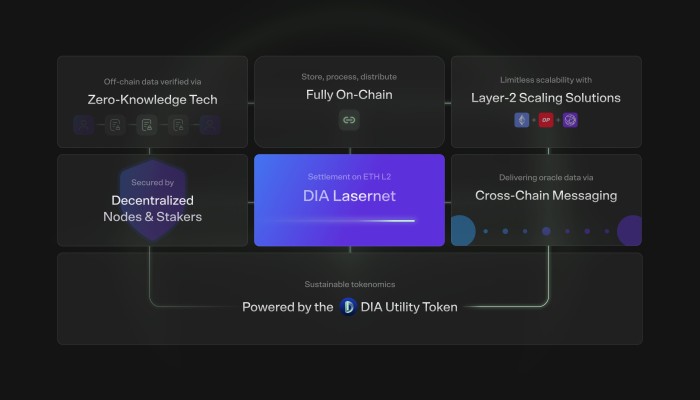
A Composable Oracle Stack with Trustless Compute
DIA Lumina is a combination of data sourcing, verification, storage, processing and delivery modules that together produce a final price output. The new architecture is designed to become fully decentralized, enabling anyone to source, secure, and feed data into DIA Lasernet. It features key components that incentivize data sourcing and enhance security using crypto-economic primitives:
- Feeders are several nodes that fetch trade ticks directly from DEXs and CEXs, create a price per source, and push them to Pods on DIA Lasernet in configurable intervals.
- Pods are smart contracts on DIA Lasernet that store asset price data on-chain. There is a dedicated Pod for each Feeder.
- The Aggregator is a smart contract that trustlessly selects data from Pods using customizable rules and produces a median value. Multiple Aggregators can be deployed, each with different parameters to meet different needs. It also offers the option to benchmark against external sources for added security.
- Spectra integrates with an industry-leading messaging protocol to transmit oracle updates to any chain, eliminating the need for chain-specific integrations.
At the heart of DIA Lumina is Lasernet, an Ethereum rollup designed as the ultimate open data chain. Lasernet is built to be scalable, supported by a dedicated Data Availability layer, and interoperable as a Layer-2. As an open data repository, Lasernet allows users to deploy custom data Feeders, Aggregators, and more, unlocking new possibilities for data sharing.
Powered by the DIA token, Lasernet embodies our vision of a decentralized, permissionless ecosystem driving the future of Web3.
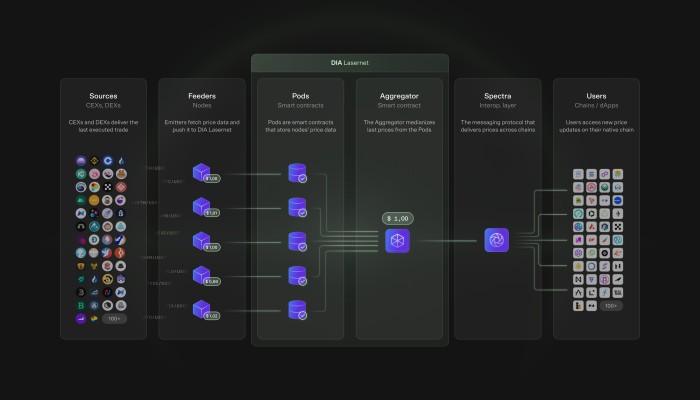
State-of-the-Art Oracle Developer Experience
The DIA V2 architecture is designed to serve today’s web3 builders with maximum flexibility, autonomy, and security.
- Crypto-economic security: Decentralized data sourcing by Feeders is backed by staked assets, both from operators and delegators.
- Cryptographic security: Lumina will leverages tools including Zero-Knowledge technology to ensure data integrity, with the flexibility to incorporate additional advanced methods.
- Any asset from any chain: DIA’s first-party data sourcing capabilities is also one of the core benefits of the new architecture, enabling unlimited asset coverage.
- Deploy anywhere, fast: In a cross-chain cryptoverse, seamless data transmission to any chain significantly reduces time to market and friction in the developer UX.
- Open and permissionless: Anyone can contribute to the system’s security or self-deploy and manage oracles using DIA’s Oracle Builder tool.
- Full data transparency: From granular data sourcing to immutable processing trails on the DIA Lasernet, this stack ensures that everything is fully traceable and verifiable.
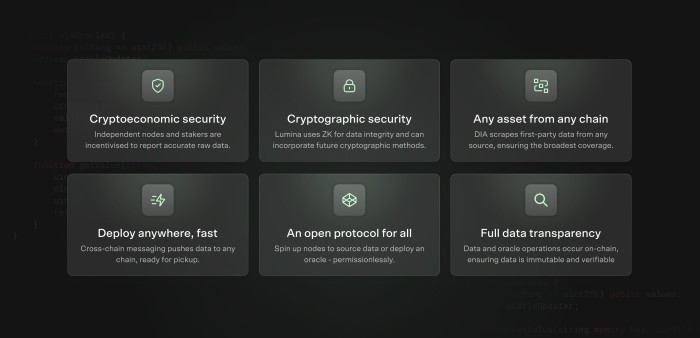
Enhancing the Ecosystem with DIA’s Utility Token
As DIA decentralizes its data-sourcing architecture, it establishes the foundation for a sustainable utility model within its ecosystem. The DIA token is designed to facilitate the operations of the decentralized platform, allowing contributors to participate actively.
- Utility-Driven Staking incentives: Node providers and token holders stake $DIA to enhance network security, receiving tokens in return for their contributions to the system’s stability and functionality.
- Tokenomic support and rewards: Revenue from oracle usage can be used for a variety of support for a sustainable long-term tokenomic model for DIA, and can be used to market-buy $DIA tokens to accrue value, funneling funds back to stakers enabling added value.
- Gas fees: $DIA are utilized as the gas token, accruing fees from transactions, further enhancing its functional utility.
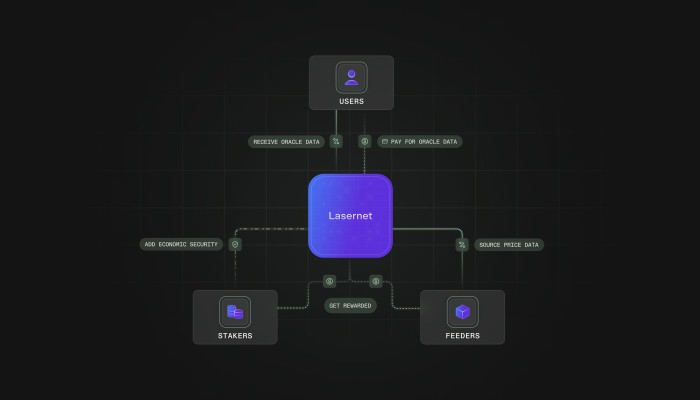
What's Next?
DIA Lumina will be rolled out in phases, introducing modules and features over the coming months:
Phase 1
- Testnet staking: Lock your DIA on Ethereum to secure a seat for Mainnet Staking and earn rewards during the lock-up period.
- Testnet launch: The DIA Lasernet testnet will open, allowing users to explore the chain and test the first oracles on the new stack.
Phase 2
- Mainnet staking: Stake DIA on the DIA Lasernet to contribute to network security.
- Closed mainnet Launch: The DIA Lasernet will go live with selected node providers and partners, powering production dApps and securing millions of USD.
Phase 3
- Open mainnet launch: Any market participant can join the decentralized oracle network and set up data-sourcing nodes.


